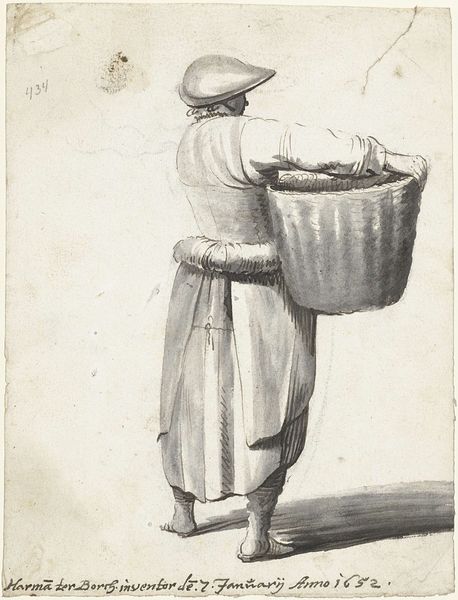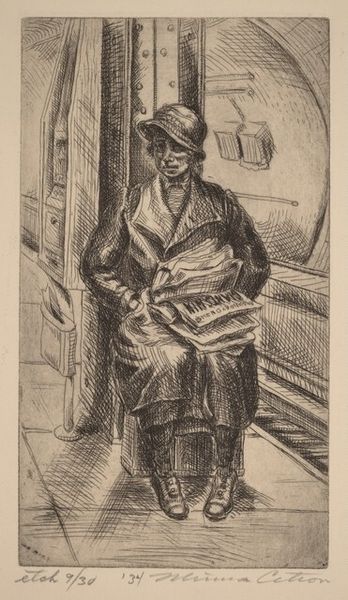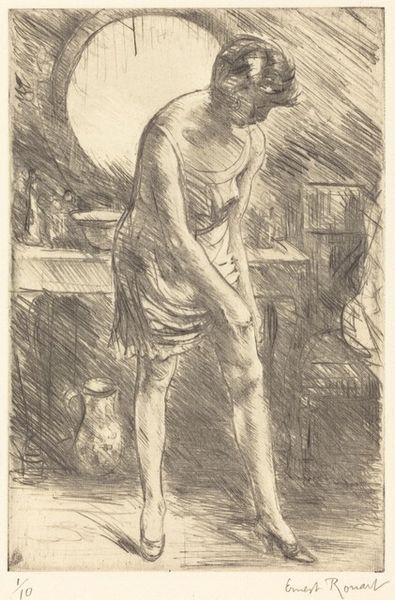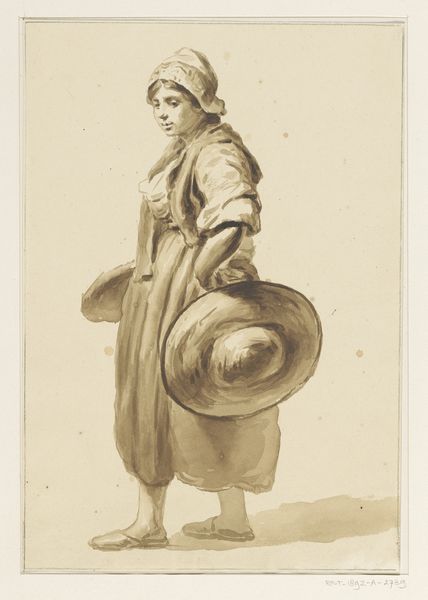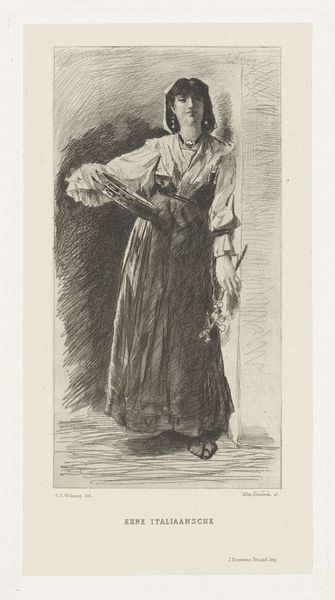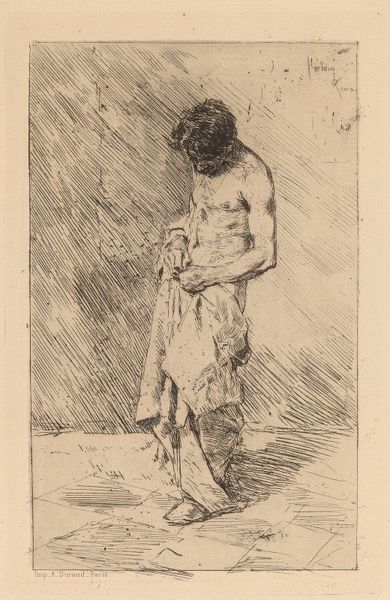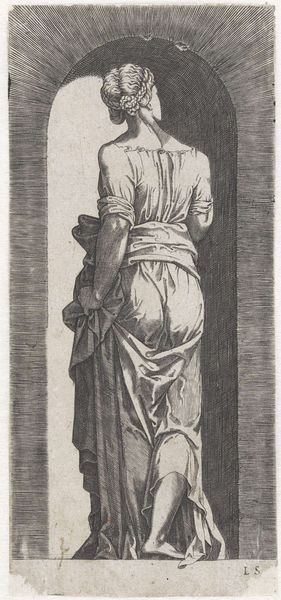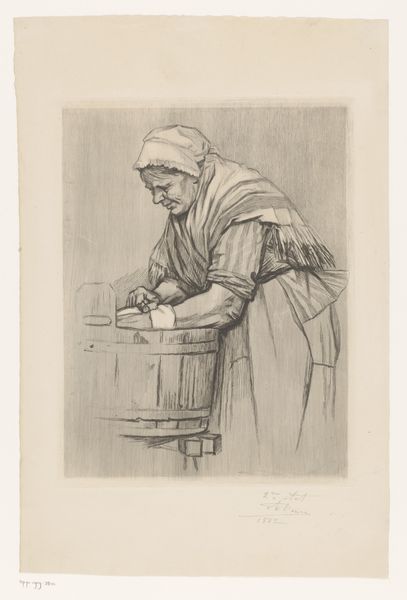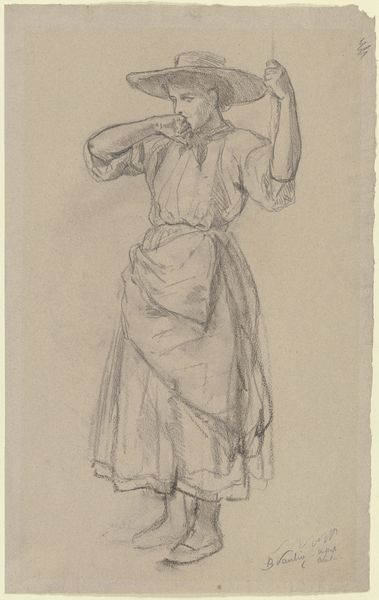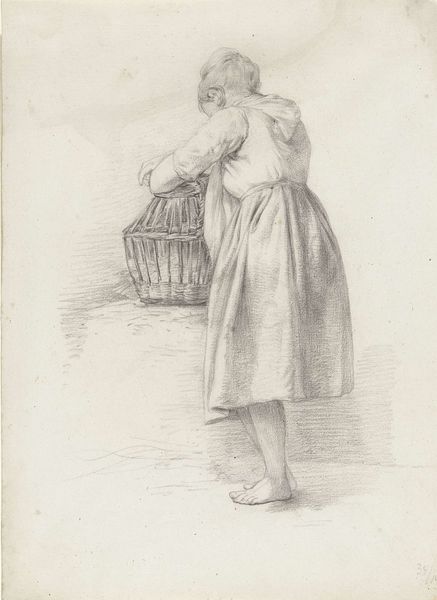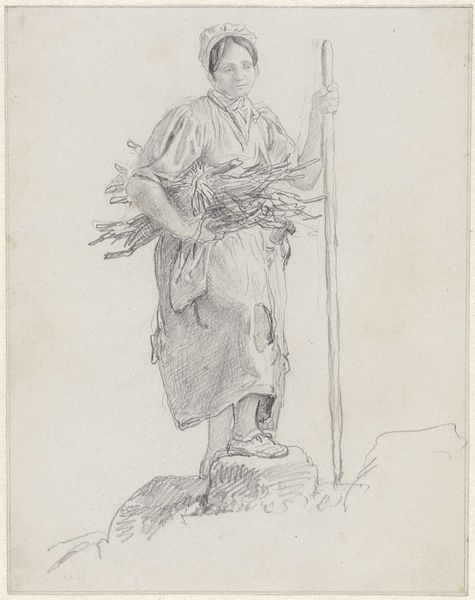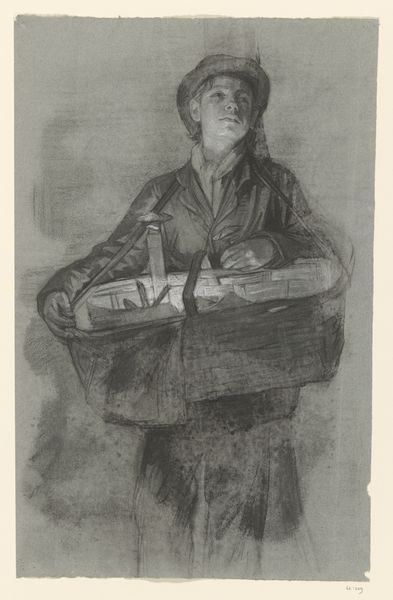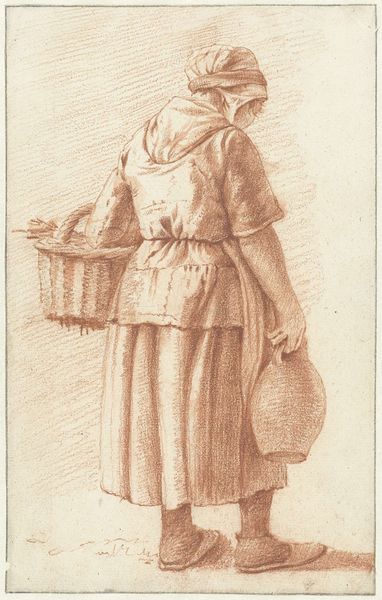
drawing, print, pencil
#
portrait
#
drawing
# print
#
caricature
#
figuration
#
pencil drawing
#
pencil
#
portrait drawing
#
realism
Dimensions: image: ca. 360 x ca. 220 mm sheet: 485 x 331 mm
Copyright: National Gallery of Art: CC0 1.0
Curator: Let's turn our attention to this evocative piece by Moses Oley, titled "Working Woman," created around 1945 or 1946. It's a print, rendered with pencil, a striking example of realism. Editor: First impressions? Tired. Not just physically, but a kind of weariness in her soul. The way she carries that bucket, the slump of her shoulders. And yet, there's something resilient in her gaze. Curator: Absolutely. Oley created this during a fascinating period. Post-World War II, America was grappling with changing roles for women in the workforce. The imagery resonates with those debates about domesticity versus economic independence. Editor: It's almost biblical, isn’t it? I see her carrying water, drawing strength, perhaps providing for her family. Her face tells a story—a silent movie of labor and quiet dignity. The shadows kind of etch that narrative into her being. Curator: Exactly! There is a very social realism undercurrent running in those times that reflects an aesthetic style where artists visualized people’s modern-day struggles, and Oley’s choice of portraying a woman performing physical labor in this way carries heavy socio-economic implications. It gives value and appreciation to often neglected jobs. Editor: You're right, it's the everyday monumentalized. The stark contrast of the pencil really lends itself to the weightiness of the moment, as it sort of pulls at my conscience… or heart, somewhere in the soul’s attic I wasn’t planning on visiting today. Curator: It’s compelling, isn't it? It demands we reconsider those forgotten narratives within broader historical accounts. The composition steers our attention from the daily challenges of women's work to those monumental figures of the era. Editor: I love how Oley doesn't shy away from the unglamorous reality of work. She isn’t posed, idealized – there's an almost documentarian rawness to it, yet undeniably graceful at the same time, full of compassion, it feels incredibly moving. Curator: Indeed, the artist uses the formal style and language of realism to bring out both social observation and a degree of critical reflection of our collective historical record. Editor: Yes, I walked in expecting one thing and I’m leaving full of emotions; that’s what happens when looking at timeless pieces of art.
Comments
No comments
Be the first to comment and join the conversation on the ultimate creative platform.
